A Hall Effect Keyboard Is Nigh Thanks To Grassroots Effort
The Hall Effect is back.
Primary among keyboard innovation is the varieties and types of switches that are available. Many keyboard enthusiasts are poking at technologies that would look beyond the widespread Cherry MX switches and their clones. We’re seeing people and companies experimenting with optical switches and analog controls, but a surprise is the impending return of the Hall Effect switch.
Hall Effect switches populated some early keyboards, but in terms of available, shipping devices, the technology essentially went extinct. However, thanks to the efforts of a Chinese company and a keyboard enthusiast named José Soltren, you’ll be able to buy one soon.
Soltren is not an employee of that company; he’s simply an enthusiast who wanted to help bring a product he was interested in to fruition, which makes this story more unique. He told Tom’s Hardware the story and explained how it all got started, why we should care about Hall Effect switches, and where this project is headed in the immediate future.
What Are Hall Effect Switches, And Why Do I Care?
Tom’s Hardware: Can you (briefly) describe how Hall Effect switches work and why we would want them on our keyboards?
José Soltren: Hall sensors and switches use electricity and magnetism in clever ways to be faster, more durable, and more reliable than any mechanical switch can possibly be. This is a truth I've known for some time given my background as an electrical engineer.
Hall sensors contain, at their core, a small, thin sliver of metal, with an electrode at each end (say, at the north and south sides). When you apply voltage to the electrodes, and across that sliver of metal, current flows from one to the other in a straight line.
Get Tom's Hardware's best news and in-depth reviews, straight to your inbox.
When you bring a magnet near this arrangement, the current doesn't flow in a straight line any longer. It bends. When it does this, it generates a voltage difference that you can measure, if you measure from west to east, perpendicular to the current flow.
You can use this measurement to detect if a magnet is nearby, [and] you can make a switch out of this. Hall Effect sensors are bounce-free, contact-free, long-lived, and inherently waterproof. They're also really fast.
The Rebirth
TH: How did you first hear about this Hall Effect keyboard?
JS: Back in June of 2016 some folks on Reddit and/or a Texas mechanical keyboards group put together an Austin area meetup. It was hosted at Das Keyboard. Foxwolf1 (his handle on Geekhack) brought an early sample of these boards to the meetup. He had found [the company] through word of mouth. He described the boards as "magnetic." We quickly clarified that in this case that meant "Hall Effect" and not "magnetic valve" or "reed switch."
Independently, I had an idea ages ago for a modern Hall Effect switch. It was inspired by the old Micro Switch Hall Effect switch units. My thought was to take a Cherry MX key switch, open it up, chop off the bottom 1mm or so of the stem slider, replace it with a magnet, put a sensor under it, and make that a drop-in replacement. [But] I thought this would be too difficult to manufacturer and shelved the idea.
So, you can imagine my joy when I saw something that was basically the idea I already had--Cherry MX compatible Hall Effect switches--in a simpler, easier to manufacture package! I went about ordering my first board immediately.
TH: What compelled you to begin working with that company?
JS: I saw an opportunity, and I took it.
Soon after the meetup, I found the company through Alibaba.com. I happened to be on the site at about 9:30pm on a weekday, Texas time--this is important since it translates to early morning China time.
My initial goal was to order a single keyboard and have that be the end of the story. I had other projects at the time that I thought would be more lucrative, like doing high-end conversions and repairs on existing vintage keyboards of all kinds. But, recall that Alibaba is not a sales site per se--it is a business-to-business site.
Well, right before I clicked the "Buy" button, I decided to click the "Chat" button and see what happened. Lo and behold, I found that I got a response from a real person with strong enough English skills that we could communicate in real time without a translator. I had some background in the details of Chinese manufacturing from discussions with [enthusiast keyboard forum members], and knew I was almost certainly talking with the factory.
Over the course of the next 90 minutes on chat, we established that the company offers many different configurations of boards, with various prices, minimum order quantities, shipping options, etc. I kept this in mind as I ordered my first board: a bamboo 87-key board with an attached cable, 70g switches, and white key caps.
Fun fact: I only got white because the black key caps were out of stock when I ordered, and I didn't want a bare board! Good thing-- the white key caps look amazing on the bamboo boards. They are now the default (and most popular) option.

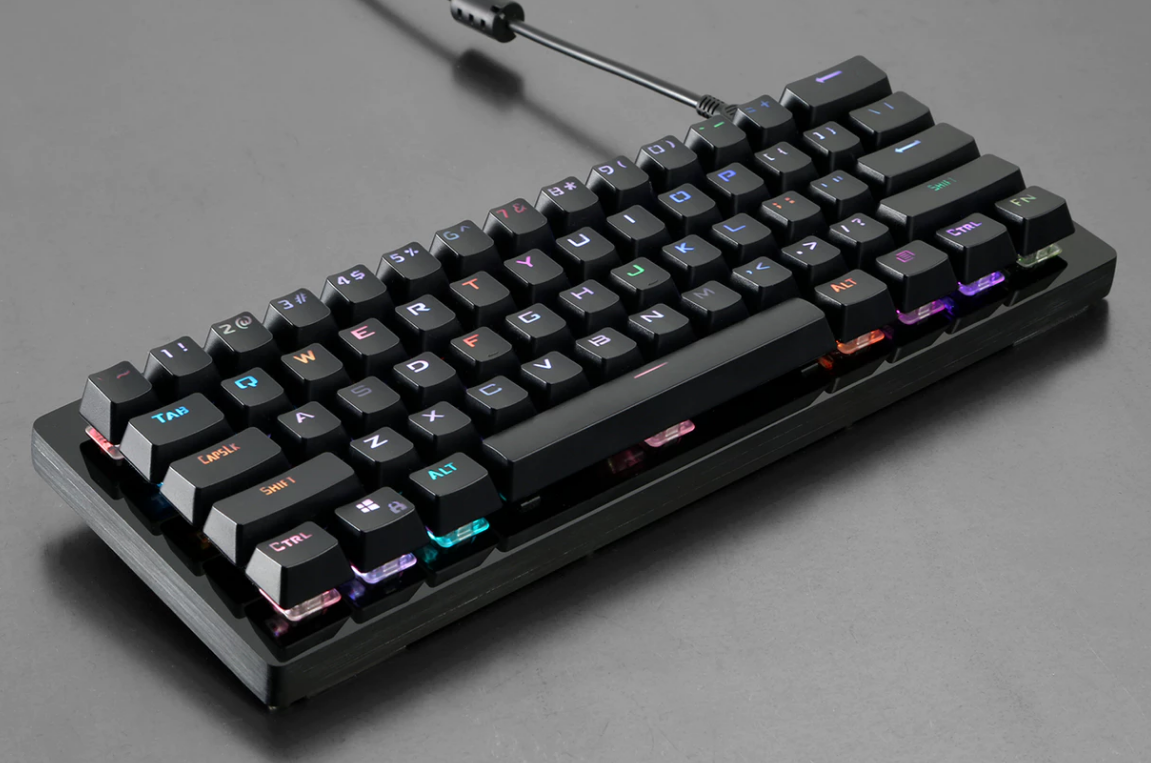
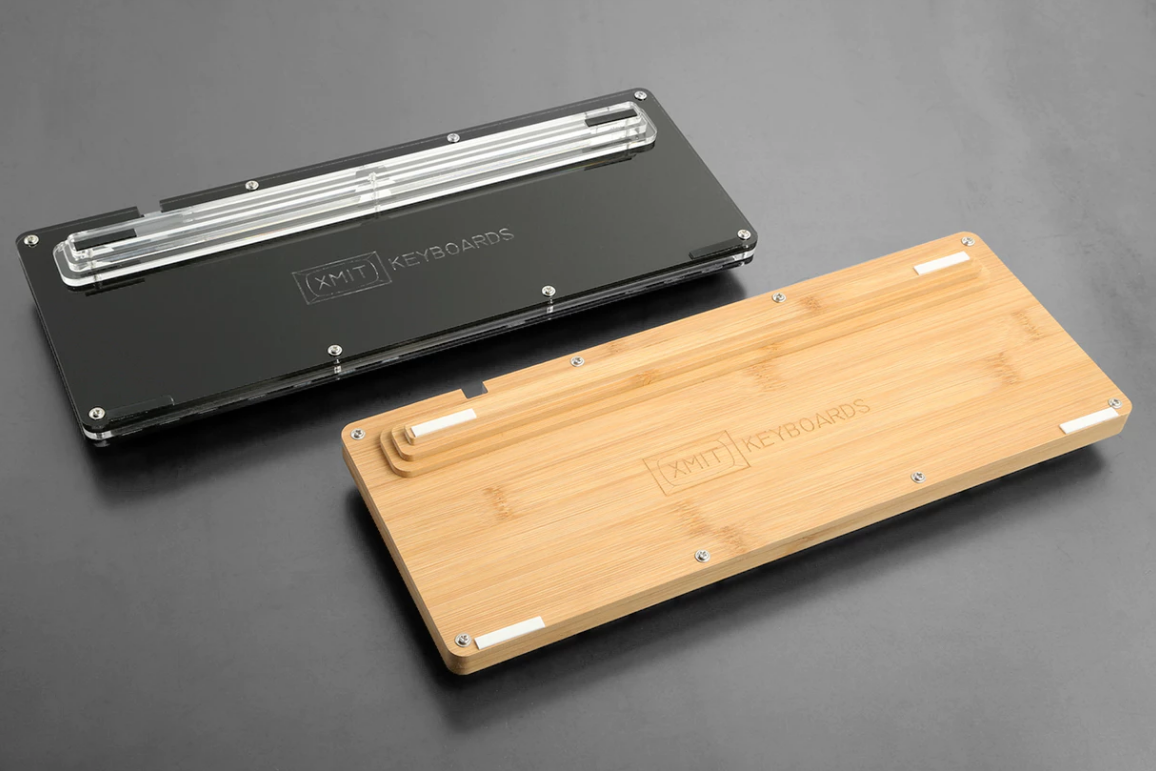
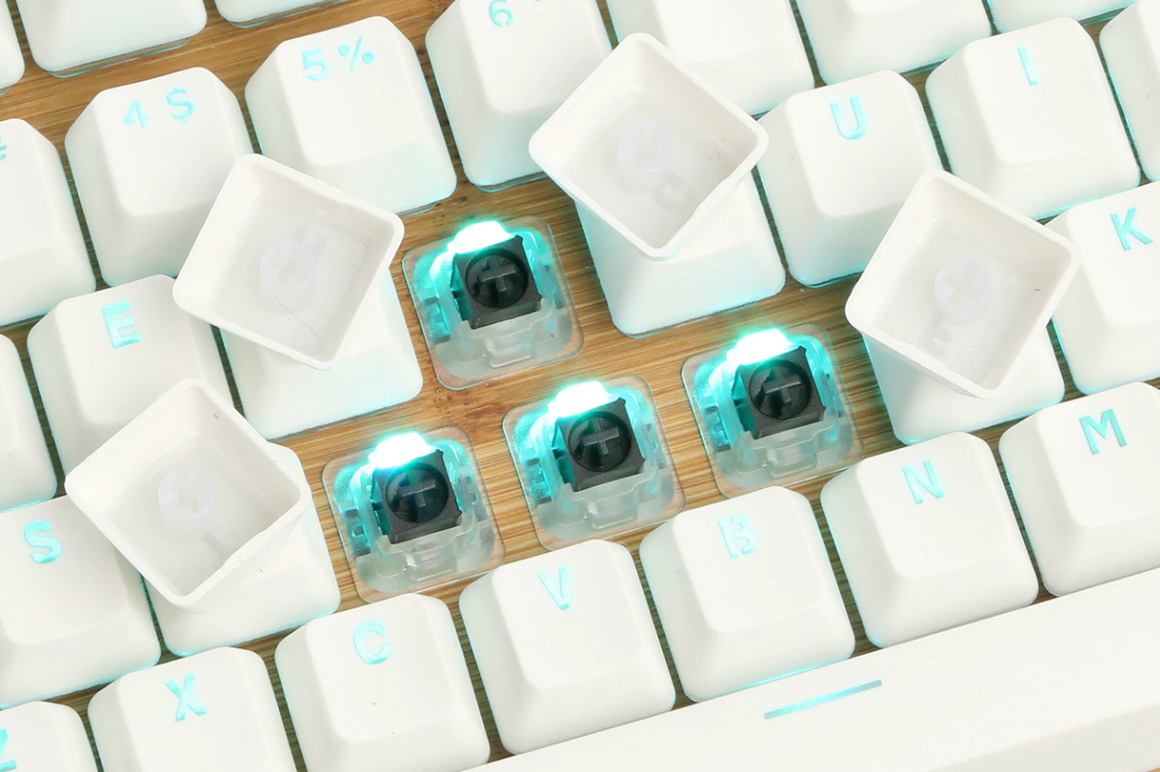


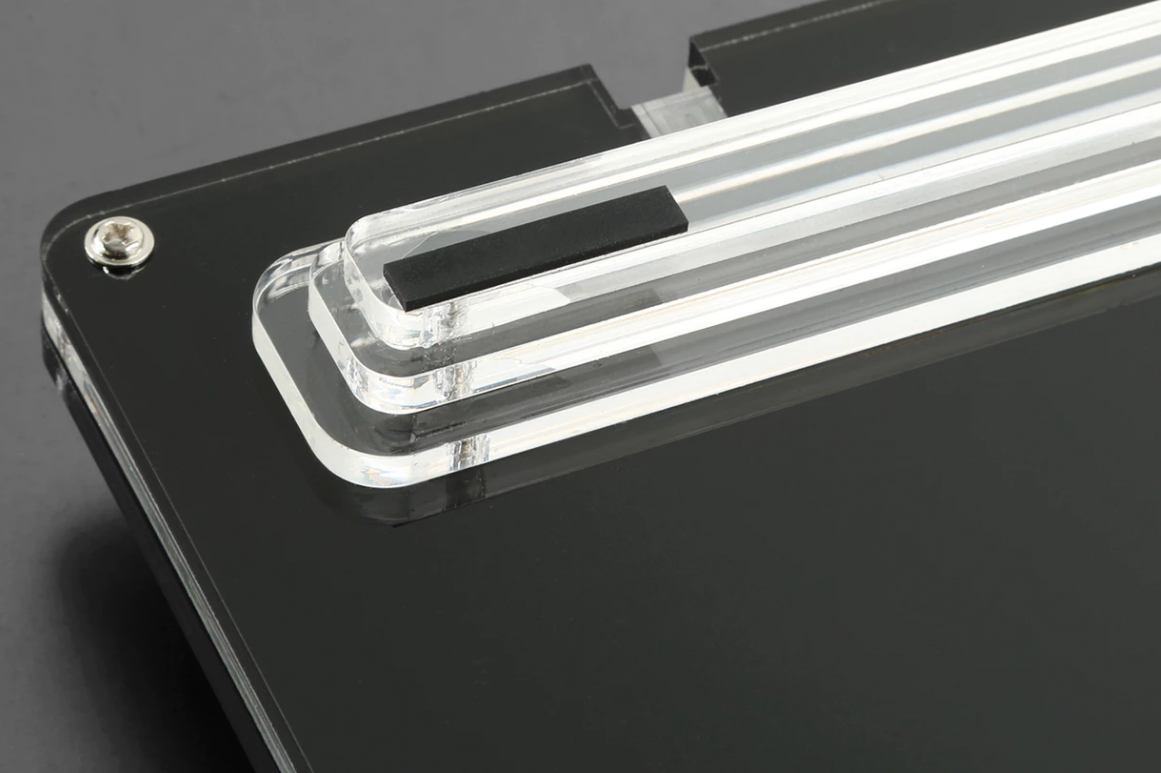
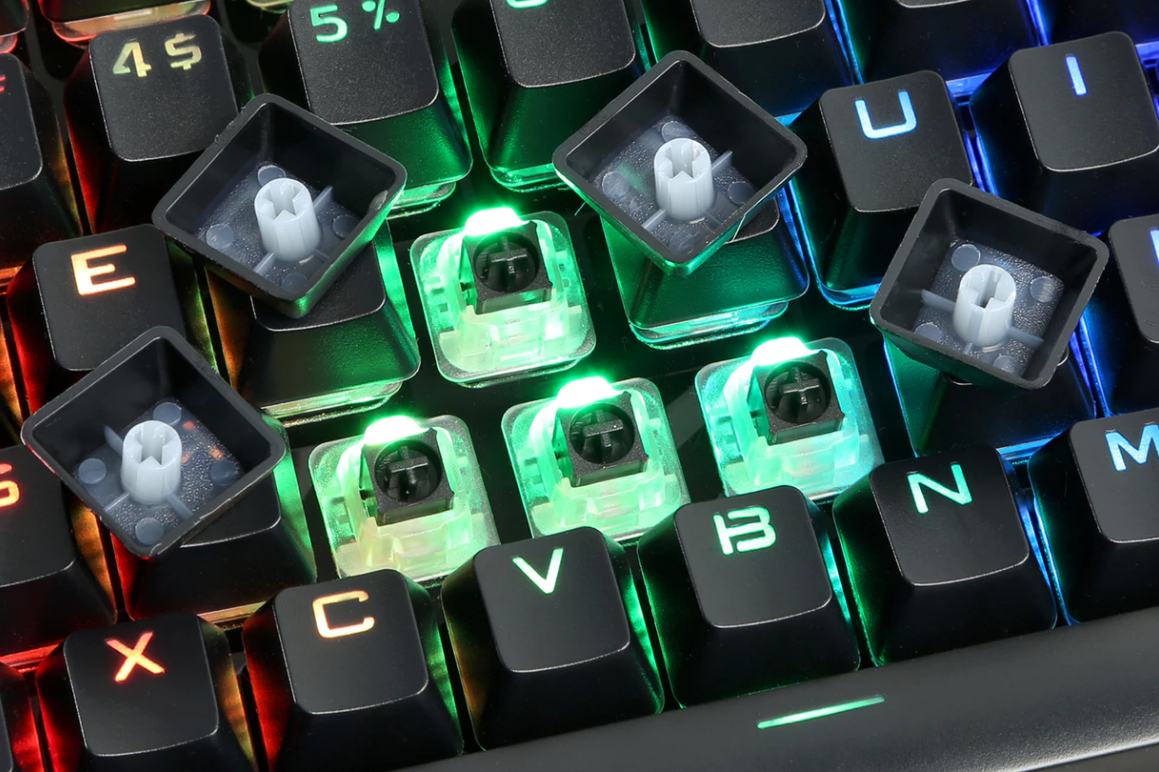
Solving Problems
TH: You’ve since been helping to develop these keyboards. Describe your role in this whole process.
JS: I would call myself a product manager, and perhaps a consulting engineer.
I've been a Geekhack member since 2010 and have over 2,000 posts on Deskthority. I'm an active member of the keyboard community. At one point in the recent past I had over 500 keyboards in my garage that I was helping sell for Elecplus, a vendor and recycler here in Central Texas.
Over the past two years, especially through Deskthority, I've been extremely fortunate to find a like-minded group of tinkerers, hobbyists, and enthusiasts. I've received and contributed a vast amount of vintage keyboard repair knowledge. Some of the original projects I've done involved magnetic switches--repairing an old magnetic valve switch board, and reverse-engineering an old Micro Switch board.
With spending so much time on the forums, I developed a really strong idea of what people like and don't like in keyboards, and what the manufacturing undertones and implications are for those preferences.
Sure, I can design my own PCBs, CAD up my own molds, write my own firmware, and do everything from scratch, but that would take forever. So I took a new direction: Don't reinvent the wheel.
My concrete role has been to work with the manufacturer to hammer out a specification for my specific keyboards, and to work with their engineering department as an ad hoc consultant to drive real improvement in their products. Here are five specific bugs that I worked with the manufacturer to fix:
1. Loud circuit board. The root cause was an unfortunate choice of capacitor for the PWM circuit that drives the LEDs, resulting in buzzing. This drove me nuts! It is fixed.
2. Poor keyboard layout. The initial 61-key board had no programmability, no overlay, and was pretty much unusable. I worked with them to establish a new layout. In the end we had to change microcontroller vendors and build a new PCB to do this.
3. Loud key switches. With my suggestion, the manufacturer implemented a mold change to add small arms to the key slider mechanism to offer upstroke damping. Though not quiet, the earlier prototypes were much louder.
4. Pinging in springs. [Enthusiast forum member] “ohaimark" and I identified the root cause of ringing and pinging in the early 50g prototypes to be a choice of a very thin wire for the springs. We went to a thicker wire, and the noise was gone!
5. Stabilizer binding. The Cherry style stabilizers slot into the board. We had some binding issues that [were] caused [by] insufficient material cut away from the existing tool path on the CNC machines. The manufacturer wanted to move to a simpler but inferior key stabilizer setup. I proposed a new tool path choice and fixed the problem for real.
That's just the beginning.
I'm obsessive about details. I put my own name on the line when I sell these boards. So, I want them to be perfect, and to get every little last detail right. These hundred little details are the difference between an okay, somewhat usable board, and an amazing product.
TH: What were some of the challenges you faced in helping prep this for wider consumption/distribution?
JS: The biggest challenges were product definition and refinement, and gathering feedback from prototypers. To a lesser extent, time zone differences between the U.S. and China played a role here as well.
I ran an early prototype run with about a dozen people and got a ton of feedback that way (including from some well known folks like matt3o, binge, and livingspeedbump). That was so helpful--I'm so glad I did that.
The other challenge has been finding the time to move this forward. As I mentioned, I have a day job and a family, so only so much time to devote to this. It's forced me to make hard decisions on what to support and not support.
TH: You’ve stated before that Hall Effect switches fell out of fashion in part because they cost too much to produce. Has that changed?
JS: 2016 silicon is way cheaper than 1980s silicon.
A Hall Effect keyboard requires a precise sensor and some digital logic per switch. Nowadays we take this for granted; you can get a smartphone for under $100. But in the 1980s, as computer systems started to get less expensive, the simplicity of a mechanical key switch with less integrated circuits won over cost.
Today, it’s the other way around. Silicon fabrication is cheap, and surface mount technology means that it is easy to crank out these boards.
Selling And Distribution
TH: In part because of the unorthodox product development, you’re getting this on the market in an unorthodox way, via Massdrop. Why do a Massdrop buy?
JS: Massdrop provided the easiest immediate option to getting these boards out to a wider audience.
As an individual seller, the task of importing, re-shipping, and directly supporting any number of keyboard sales was more than I could handle. Sure, I could stand to make some more money this way, but at what cost?
[Enthusiast forum member] HaaTa had done business extensively with Massdrop in the past and explained the back end details of their operation to me. With a recommendation in hand, and their knowledge of the keyboard community, we were able to collaborate naturally. It helped that I was in town for a business trip in SF and could visit their offices in person. This started a strong relationship that has served us well through the project.
I also explored being an Amazon seller, and working with another well-known keyboard reseller in the U.S. The former would require too much of me; the latter stopped answering emails.
Some folks on the forums were hesitant about using Massdrop. I started a thread on each of Deskthority and Geekhack to get real feedback from folks [who are] using Massdrop. Most of the concerns were with shipping or manufacturing delays--things outside of their control.
Working with Massdrop has been amazing. I hope to work with them again in the future.
TH: Do you think these can or will be mass produced?
JS: Yes! The manufacturer can already crank out 500 boards at a time without much trouble.
We have some really exciting developments coming up soon: tactile and clicky key switches, more layout options, more case options. I'm focusing on ways to bring more choices to users while also making manufacturing simpler and more robust. Sounds crazy, right? It can be done!
The Details
If you want to get in on this drop and acquire your own Hall Effect keyboard, you can join here (you may need to be logged in to Massdrop to access the page). Although the MSRP is $150, you can grab one now for just $100. Keyboards in this batch are scheduled for shipping in February 2017.
The drop is set for 1,000 keyboards, but Soltren told us that they could extend it to 1,500 right away if interest is high enough. He noted that they could also possibly run another drop soon and that there’s a second version in the works with more features, too.
In any case, if you want to ensure that you get in on this round, the last day and time to do so is Monday, November 21 at 11:59pm PT. (Depending on interest, it may be possible to extend the deadline.)
They’re also available in multiple iterations:
| Keys | Case | Spring Weight |
|---|---|---|
| 61 | Black acrylic | 50g |
| 61 | Bamboo | 70g |
| 87 | Black acrylic/clear | 50g |
| 87 | Bamboo | 70g |
| 104 | Black acrylic | 50g |
| 104 | Bamboo | 70g |
In addition to the below, the Massdrop post stated that “you can also include a pack of 100 in alternative weight springs (+ $5), as well as a full keycap set in alternative keycap color (+ $20).”
| Header Cell - Column 0 | XMIT Hall Effect Keyboards |
|---|---|
| Layout | -61-key ANSI-87-key ANSI-104-key ANSI |
| Materials | -CNC bamboo-Acrylic |
| Key caps | -PBT+POM double shot-Supports backlighing-Cherry MX mount |
| Spring weights | -50g (approx. 35g actuation)-70g (approx. 50g actuation) |
| Actuation Point | 1.8-2mm |
| Total Key Travel | 4mm |
| Key Sliders | POM slider with upstroke damping in polycarbonate housing (provisions for click and tactile in future) |
| Lighting | -RGB backlighting, surface-mount LEDs-Multiple lighting patterns-”High-frequency, silent PWM brightness control” |
| Connected | Removable mini USB |
| Stabilizers | Cherry-style |
| PCB assembly | Surface mount |
| Dimensions | -61-key: 12 x 4.5 x 1.5 in (30.5 x 11.4 x 3.8 cm)-87-key: 14.5 x 5.7 x 2 in (36.8 x 14.5 x 5.1 cm)-104-key: Unknown |
| Availability | February 2017 |
| Price | $150 MSRP, currently $100 (only from Massdrop, and for a limited time) |
Seth Colaner previously served as News Director at Tom's Hardware. He covered technology news, focusing on keyboards, virtual reality, and wearables.
-
anbello262 If all the benefits turn out to be true, we could be seeing the start of a mechanical keyboard replacement. If not, well, it will be a great gadget to show off.Reply -
bit_user Before ordering white on bamboo, give some thought to how it will age.Reply
I used to pop off the keycaps and clean my keyboards once every year or so. Lately, I can't be bothered. Dust & dirt gets on the sides of the keys, even though I'm pretty clean and rarely eat at my PC.
-
mikeebb Interesting. Early Radio Shack (Model 1, possibly also early 2 and 3) had Hall-effect keyswitches. They *did* require debounce routines - early ROMs didn't have one or a good one, resulting in keybounce unless an add-on routine was used. Permanently fixed in the ROM replacement that provided upper/lower case, and in the DOS's.Reply -
alextheblue Reply18891401 said:Interesting. Early Radio Shack (Model 1, possibly also early 2 and 3) had Hall-effect keyswitches. They *did* require debounce routines - early ROMs didn't have one or a good one, resulting in keybounce unless an add-on routine was used. Permanently fixed in the ROM replacement that provided upper/lower case, and in the DOS's.
I thought bounce was an issue mostly with mechanical switches and relays (some designs more than others). Where the metal contacts physically strike and "bounce" away from each other briefly, chattering and causing extremely brief intermittent contact until they settle. This can be filtered or multi-sampled out.
I can't see this sort of thing being an issue with a hall effect switch. Are you SURE the keyboards you're talking about weren't mechanical? -
mikeebb Reply18894976 said:18891401 said:Interesting. Early Radio Shack (Model 1, possibly also early 2 and 3) had Hall-effect keyswitches. They *did* require debounce routines - early ROMs didn't have one or a good one, resulting in keybounce unless an add-on routine was used. Permanently fixed in the ROM replacement that provided upper/lower case, and in the DOS's.
I thought bounce was an issue mostly with mechanical switches and relays (some designs more than others). Where the metal contacts physically strike and "bounce" away from each other briefly, chattering and causing extremely brief intermittent contact until they settle. This can be filtered or multi-sampled out.
I can't see this sort of thing being an issue with a hall effect switch. Are you SURE the keyboards you're talking about weren't mechanical?
At this remove (Model 1 era was late 1970s) it's hard to be absolutely sure. I don't know where to find the manufacturing data if in fact any were kept. But I was told at the time that they were Hall-effect keyswitches, and in more than 10 years I only had to replace one (became mechanically sticky after about a year - yes, keyswitches were individually replaceable, and this was probably infant mortality). I suspect the keybounce in early machines (mostly Level 1, I never really had it in Level 2 BASIC) was related more to poor software than the switches, and once we moved to (TRS-, L-, New-, etc.)DOS there was never a keyboarding issue. Should also note that they were not "clicky" at all. Simple thunk on reaching the end of the (rather long) key travel. -
GeoffCoope Without sounding like a bug bear, what are the real world benefits of using this?. Saying it is "really fast" has no meaning without statistics. Is it a gamers keyboard in this respect? What about simultaneous key presses? Thanks.Reply -
Chyrosran22 Reply
I could identify the switch if you gave the precise model name or especially a picture of the keyswitch. Actually, even just a picture of the back of the PCB would do in this case. I ask because I'm not completely sure what model you're referring to. If you mean the TRS-80 Model 1, that didn't come with Hall effect switches (it used SKCC conductive switches).18895448 said:18894976 said:18891401 said:Interesting. Early Radio Shack (Model 1, possibly also early 2 and 3) had Hall-effect keyswitches. They *did* require debounce routines - early ROMs didn't have one or a good one, resulting in keybounce unless an add-on routine was used. Permanently fixed in the ROM replacement that provided upper/lower case, and in the DOS's.
I thought bounce was an issue mostly with mechanical switches and relays (some designs more than others). Where the metal contacts physically strike and "bounce" away from each other briefly, chattering and causing extremely brief intermittent contact until they settle. This can be filtered or multi-sampled out.
I can't see this sort of thing being an issue with a hall effect switch. Are you SURE the keyboards you're talking about weren't mechanical?
At this remove (Model 1 era was late 1970s) it's hard to be absolutely sure. I don't know where to find the manufacturing data if in fact any were kept. But I was told at the time that they were Hall-effect keyswitches, and in more than 10 years I only had to replace one (became mechanically sticky after about a year - yes, keyswitches were individually replaceable, and this was probably infant mortality). I suspect the keybounce in early machines (mostly Level 1, I never really had it in Level 2 BASIC) was related more to poor software than the switches, and once we moved to (TRS-, L-, New-, etc.)DOS there was never a keyboarding issue. Should also note that they were not "clicky" at all. Simple thunk on reaching the end of the (rather long) key travel.
-
RomeoReject Durability and feel would be the two universal benefits. The speed is a niche benefit for gamers.Reply -
Chyrosran22 Reply
The benefits are all derived from the Hall effect sensing mechanism. Because this doesn't require physical contact between most of the parts, there is less friction, and you get a smoother switch action, and because it's the closest you can get to solid-state switching and the parts (basically just a magnet) are super-reliable, the keyboard becomes extraordinarily durable in theory.18895739 said:Without sounding like a bug bear, what are the real world benefits of using this?. Saying it is "really fast" has no meaning without statistics. Is it a gamers keyboard in this respect? What about simultaneous key presses? Thanks.


